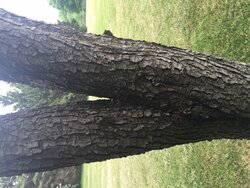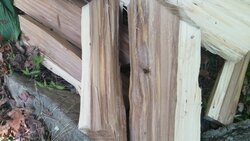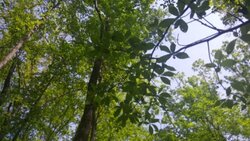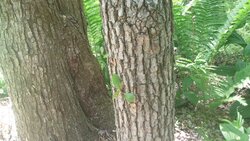My go-to resource is the Audubon Society Field Guide. Yes, I'm aware that Hickory and Pecan are both in the genus
Carya. I didn't mean to confuse anyone, but I think
your confusion started before that.

Early on, you stated that the first pic posted was of a simple leaf (you also said "there ain't very many trees with simple leaves" when, in fact, most hardwood trees have simple leaves.) The OP confirmed that the leaf was from the wood in question, but later you post that it's "probably some type of hickory" when that's not possible, given the simple toothless leaf. Quit trying to confuse us!








 Early on, you stated that the first pic posted was of a simple leaf (you also said "there ain't very many trees with simple leaves" when, in fact, most hardwood trees have simple leaves.) The OP confirmed that the leaf was from the wood in question, but later you post that it's "probably some type of hickory" when that's not possible, given the simple toothless leaf. Quit trying to confuse us!
Early on, you stated that the first pic posted was of a simple leaf (you also said "there ain't very many trees with simple leaves" when, in fact, most hardwood trees have simple leaves.) The OP confirmed that the leaf was from the wood in question, but later you post that it's "probably some type of hickory" when that's not possible, given the simple toothless leaf. Quit trying to confuse us! 


 If you check the Wood database it lists two different types of hickory. The true-hickories and the pecan-hickories, they are 2 sub groupings for hickory.
If you check the Wood database it lists two different types of hickory. The true-hickories and the pecan-hickories, they are 2 sub groupings for hickory.